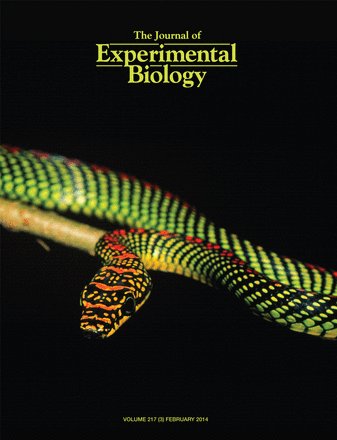 |
(The cover image of "The Journal of Experimental Biology" February edition.) |
Four American scientists recently unveiled the secret of “flying snakes,” Chrysopelea Paradisi, a species endemic to Southeast Asia, which has long been a mystery in the field of science.
The flying snake can glide between distant trees by flattening its body in a unique cross-sectional shape, which becomes a lifting surface far more powerful than thick airfoils.
“When gliding, the flying snake Chrysopelea paradisi morphs its circular cross-section into a triangular shape by splaying its ribs and flattening its body in the dorsoventral axis, forming a geometry with fore-aft symmetry and a thick profile,” according to the research article by Virginia Tech University professors Deniel Holden, John Socha and Nicholas Cardwell, and Purdue University professor Pavolos Vlachos.
“This geometry generated significantly larger maximum lift coefficients than many other shapes including bluff bodies, thick airfoils, symmetric airfoils and circular arc airfoils.”
Although mankind cannot emulate these aerodynamic snakes in drastically changing their bodies to fly, the study can provide significant insight for developing robots and other flying devices, experts said.
By Chung Joo-won (
joowonc@heraldcorp.com)



![[Herald Interview] 'Amid aging population, Korea to invite more young professionals from overseas'](http://res.heraldm.com/phpwas/restmb_idxmake.php?idx=644&simg=/content/image/2024/04/24/20240424050844_0.jpg)




